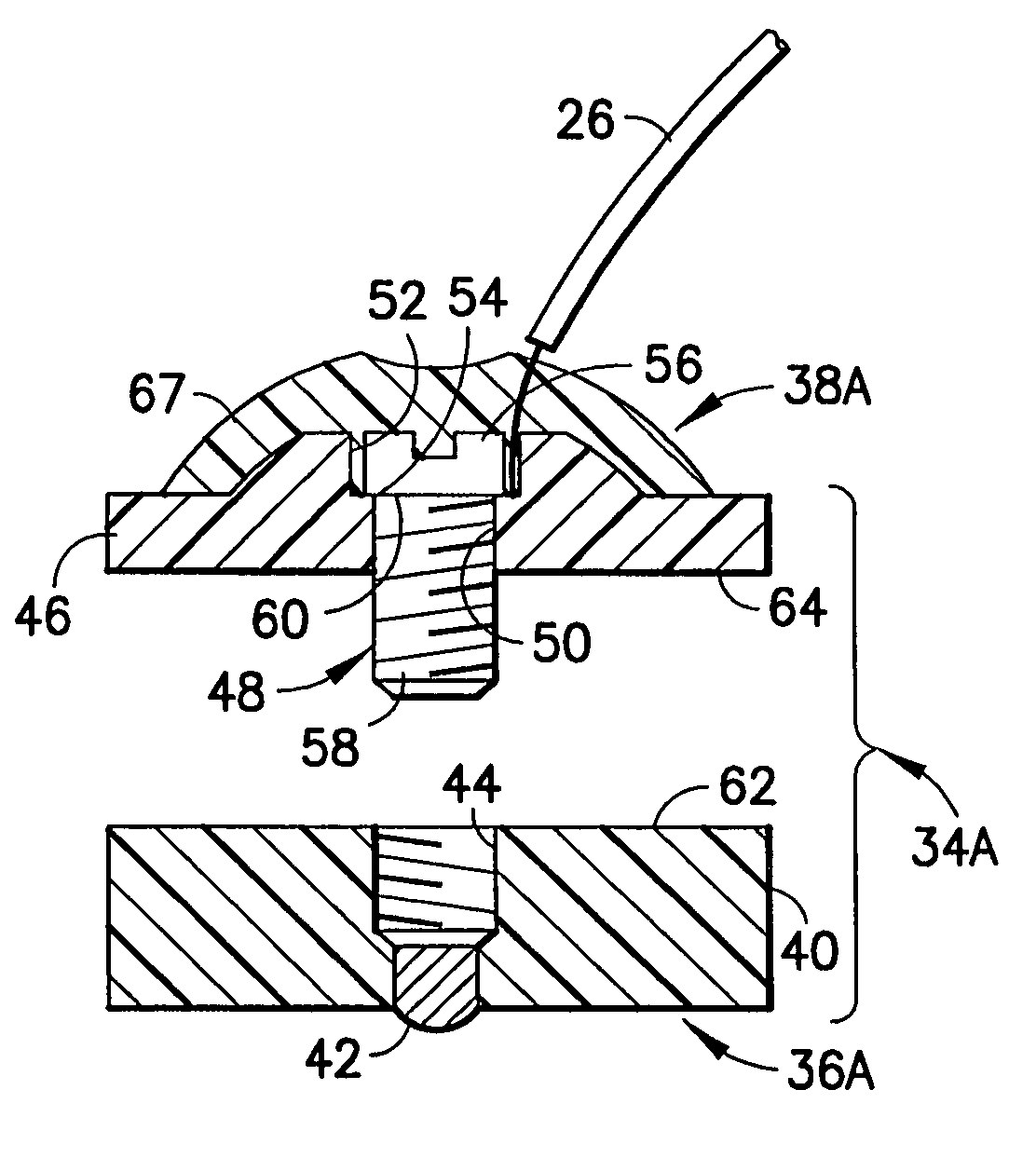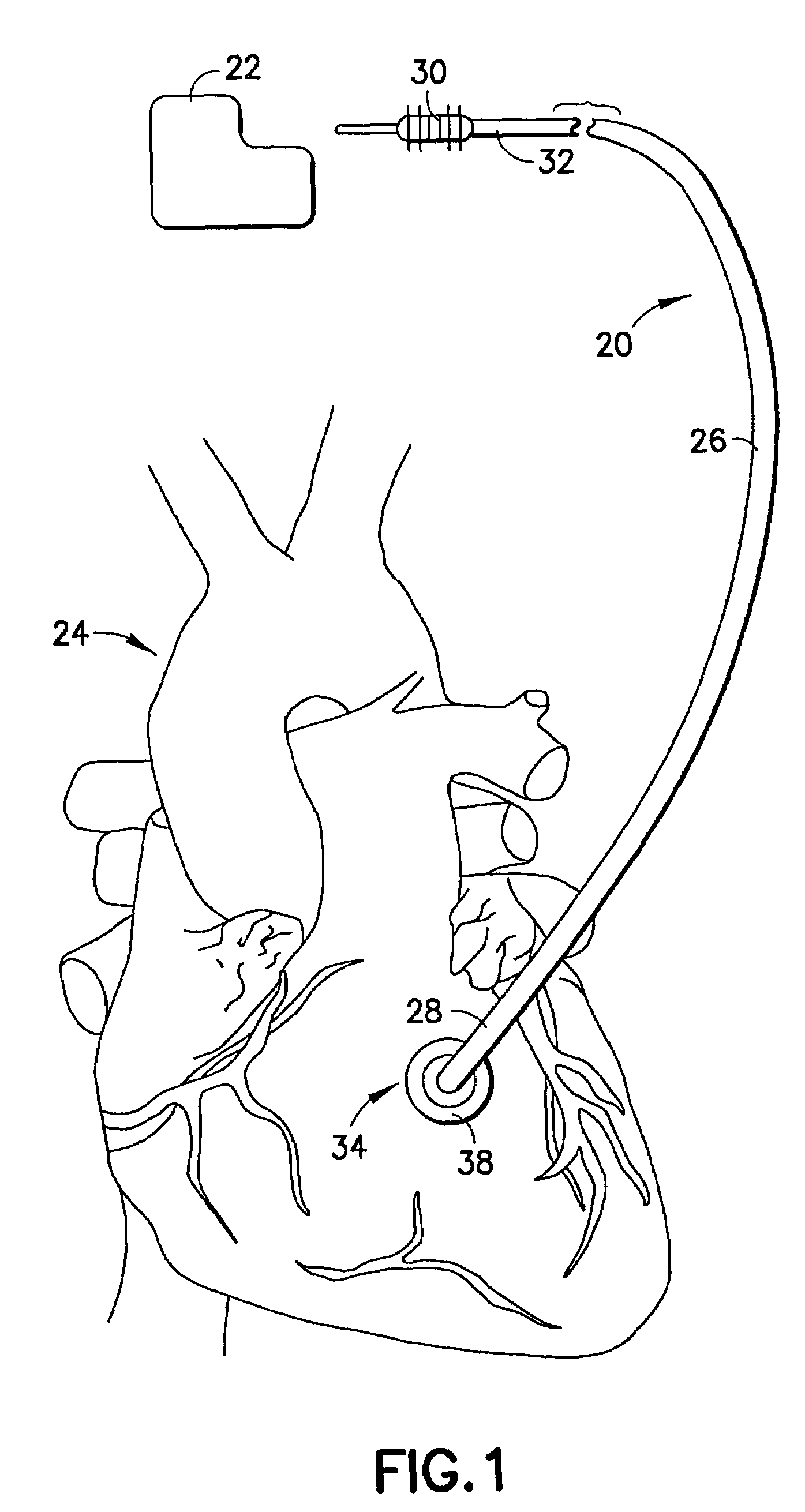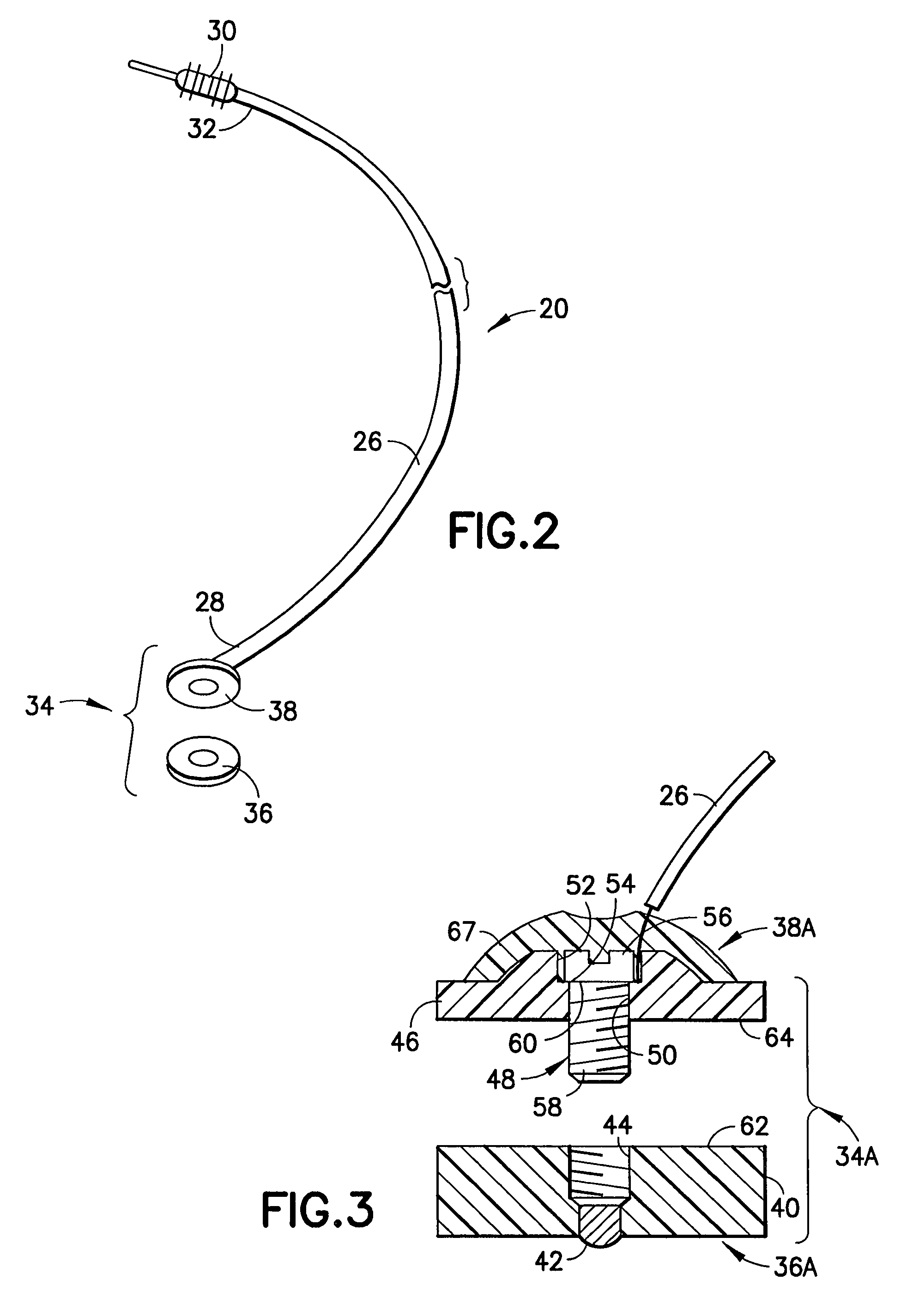Epicardial and myocardial leads for implanting in the heart by thoracotomy or port access surgeries with detachable electrode tip
- Summary
- Abstract
- Description
- Claims
- Application Information
AI Technical Summary
Benefits of technology
Problems solved by technology
Method used
Image
Examples
Embodiment Construction
[0050]Refer now to the drawings and, initially, to FIGS. 1 and 2 in which are shown diagrammatic perspective views of a medical electrical, epicardial or myocardial lead 20 for use in association with an electrical stimulator 22 such as a pacemaker or defibrillator providing electrical stimulation to a heart 24. Although the lead 20 will be described with reference to the embodiments shown in the drawings, it should be understood that lead 20 can be embodied in many alternate forms or embodiments. In addition, any suitable size, shape or type of elements or materials could be used.
[0051]The lead 20 is adapted to conduct electrical stimulation from the electrical stimulator 22, which may be, alternatively and selectively, implantable or external to a site of the heart 24 and to conduct electrical signals of the heart from the site to the stimulator. The lead 20 includes an elongated lead body 26 extending from a lead body distal end 28 to a connector 30 at the lead body proximal end ...
PUM
 Login to View More
Login to View More Abstract
Description
Claims
Application Information
 Login to View More
Login to View More - R&D
- Intellectual Property
- Life Sciences
- Materials
- Tech Scout
- Unparalleled Data Quality
- Higher Quality Content
- 60% Fewer Hallucinations
Browse by: Latest US Patents, China's latest patents, Technical Efficacy Thesaurus, Application Domain, Technology Topic, Popular Technical Reports.
© 2025 PatSnap. All rights reserved.Legal|Privacy policy|Modern Slavery Act Transparency Statement|Sitemap|About US| Contact US: help@patsnap.com



